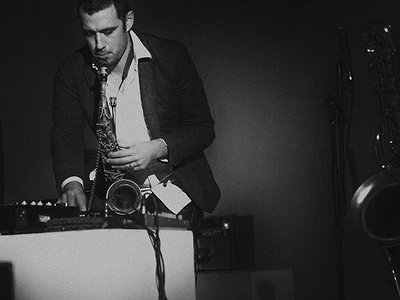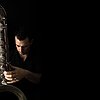In how much, do you feel, are creative decisions shaped by cultural differences – and in how much, vice versa, is the perception of sound influenced by cultural differences?
This is so specific to each person’s unique experience from both the artist and the listener perspective. I personally don’t feel that my cultural experience is overtly reflective in any work I have done nor do I draw on my cultural differences as a well of inspiration. I have however, worked with artists who are clearly making creative decisions shaped by their cultural differences and the work can be both deeply personal and at the same time bring a depth to it that is rooted in the experience of many.
On the side of perception, cultural differences can simply shape the perspectives an audience brings to a listening experience. Discoveries can be made and familiarity can be found. Sound is subliminally very manipulative and the effect it has on us is no doubt determined by the entirety of our unique experience.
The relationship between music and other forms of art – painting, video art and cinema most importantly - has become increasingly important. How do you see this relationship yourself and in how far, do you feel, does music relate to other senses than hearing alone?
I am fortunate enough to have regular collaborators in disciplines outside of music that have had a profound impact on the way my music has developed. As an example, I worked closely with experimental filmmaker Daichi Saito on his last film Engram of Returning. The film has an incredible momentum of flashes of colour and abstracted scenery. As a solo saxophone score it required constant shifting textures and subtle rhythmic complexities that I would never have fully committed to strictly through music. This language is now part of my vocabulary as a saxophonist and has lead to distinct compositional ideas as well.
Similarly I have collaborated with sound poet Kaie Kellough for many years. Kaie has a masterful command of language and phonetics. Working as a duo in this setting, musical forms are defined by an over-arching narrative of each piece while timbre and rhythm are extracted from the phonetic building blocks of the words themselves. It’s been a fruitful relationship that has fostered a unique musical language strongly defined by the spoken and written word.
Creating sound design for contemporary dance has also enabled me to develop long form abstract pieces that impose an underlying narrative. In a theatre setting sound can be so incredibly impactful and it is wonderful to have the opportunity to create entire worlds that can provide an emotional contour to the audience experience.
It’s undeniable that music is a sensory experience that extends beyond hearing alone. Sonic textures can evoke colours and scenic imagery and sound organization of frequencies can enable physical sensations and emotional responses. I certainly think about these things in my work and am fortunate enough to have regular collaborators that allow me to explore these ideas exclusively.
There seem to be two fundamental tendencies in music today: On the one hand, a move towards complete virtualisation, where tracks and albums are merely released as digital files. And, on the other, an even closer union between music, artwork, packaging and physical presentation. Where do you stand between these poles?
Digital releases obviously allow you to make music very accessible with limited cost and there is certainly nothing wrong with that. It is a fantastic way to document and share your work, enables you to easily tread new listening territory, and allows you to share the work of others that you may resonate with.
From an artistic standpoint however I feel that the realization of your music in a concrete form presents an opportunity to take a final step in defining your musical ideas. Aside from the artwork itself choices in the colour spectrum used, texture of the card stock, packaging layout, etc., can strengthen an idea and bring another level of transparency to the music. That completeness finalizes a project where as a strictly digital release somehow feels open ended to me.
The role of an artist is always subject to change. What's your view on the (e.g. political/social/creative) tasks of artists today and how do you try to meet these goals in your work?
The role of the artist is a singular experience for each artist and the tasks they choose to carry out is entirely unique. For myself, working on my art as a musician has been an incredibly slow process of revealing to myself who I am as an individual and has presented an opportunity to discover how that individual voice can contribute to and support the community around me. It’s a very exciting turning point as an artist when you are invited to participate in projects not by what you do technically but by the unique perspective and voice you bring. The feeling is entirely different and it promotes an on going inward search for authenticity while developing an outward ambition to nourish the community around you. My creative tasks have simply been to maintain a practice that fosters an awareness of this relationship and to be as supportive as I can of the artistic community that I am fortunate enough to contribute to.
Music-sharing sites and -blogs as well as a flood of releases in general are presenting both listeners and artists with challenging questions. What's your view on the value of music today? In what way does the abundance of music change our perception of it?
The abundance of music has made diversity accessible and that is a very good thing. More people are listening to a wider variety of music and it is easier to share sounds that they are excited about. As a consumer of music that does not download music or use streaming sites this abundance hasn’t really devalued music for me but rather enabled me to readily explore my musical interests while connecting to broader musical communities. By this measure I think the individual entirely determines the value of music and if they happen to place a high value on it then the abundance is only a benefit.
How, would you say, could non-mainstream forms of music reach wider audiences?
Presenting non-mainstream music means trying to reach people with the unknown and there is a lot of risk in that for a potential audience member. Attention spans are short and people want to invest in something they know they will like. When the mainstream is commercially driven the norm is that music is a product that should be enjoyed so why would anyone invest in something that will challenge him or her? That’s a big hurdle to over come in reaching entirely new audiences and the incredible festival organizers, labels, music promoters, and non-profits who work in this domain should all be celebrated for taking on that challenge.
Staying true to an artistic vision with genre crossing programing is perhaps one way to introduce audiences to music they would never otherwise encounter, thereby presenting a gateway for listeners to entirely new musical worlds. Having occasionally opened for rock bands I am always struck by how engaged the audience can be and how freeing it is as a performer to have an entirely new audience base in front of you.
In my experience, the limited point of reference for the listener can sometimes promote an openness to the music that is rare. This has also been true in my experience working with mixed media. An audience can be exposed to abstract sound as an accompanying element to a visual experience and this can cultivate entirely new interpretations of the listener’s relationship to sound in general. Remaining inclusive and open to where artistic aesthetics and disciplines intersect as both a performer and presenter seems to be one way to provide a roadmap for listeners to safely enter uncharted territory and discover a network of music that may resonate with them.
Usually, it is considered that it is the job of the artist to win over an audience. But listening is also an active, rather than just a passive process. How do you see the role of the listener in the musical communication process?
It depends on the context of the musical situation. Music presented in controlled quite spaces designed for optimal acoustics enable listeners to engage with the subtle details of sound. Going to a concert in that environment means making a commitment at the outset to engage in active listening.
It’s obviously more difficult to expect that level of engagement in a café or noisy music venue as there typically are various levels of commitment to listening present in the audience. In this case however, I think it can be incredibly impactful when the performer is able to achieve a hush in the room or a pregnant pause of anticipation in the music. That collective focus snapping into place can heighten the entire experience of communication through sound and in some ways brings merit to the job of winning over an audience.
Reaching audiences usually involves reaching out to the press and possibly working with a PR company. What's your perspective on the promo system? In which way do music journalism and PR companies change the way music is perceived by the public?
All I can say is that I am grateful to those who have chosen to draw attention to more contemporary music. Returning to your question about non-mainstream forms of music reaching wider audiences, PR companies working for artists in this domain, along with music journalism covering the outer reaches of music, are incredibly important in this pursuit. Both PR and journalism distil a message behind the music and deliver it to a broader audience than an artist could ever reach on their own. When dealing with non-mainstream forms of music I think any work in bridging a gap of understanding while presenting options and invitations to tread new waters is very impactful for the arts as a whole and vital for its development.



